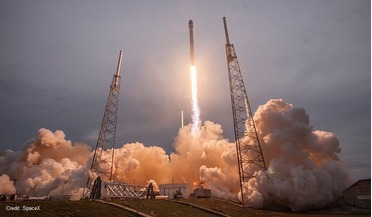 12 October 2016
‘Asgardia’ to become the first new Space Nation
12 October 2016
‘Asgardia’ to become the first new Space Nation
... regime is indispensable for governing outer space in order to ensure it is explored on a sustainable basis for exclusively peaceful purposes and to the benefit of all humanity, including future generations living on planet earth and in outer space...
 May 2018
Taxation of outer space: a next step for space exploration?
May 2018
Taxation of outer space: a next step for space exploration?
... legal framework, we encounter an imperative ‘non-appropriation” principle, as well as the principle for using outer space for peaceful purposes and for the “benefit of all mankind”. One could conclude that selling space materials on Earth would...
 September 2023
India signs up to the Artemis Accords
September 2023
India signs up to the Artemis Accords
...to abide by a number of principles when operating in space. The 10 principles are: 1. Peaceful uses: cooperative activities are exclusively for peaceful purposes and in accordance with international law. 2. Transparency: commit to broad dissemination...
 May 2017
World needs strong space governance system
May 2017
World needs strong space governance system
... Union and the US strived to have détente in the new environment. They agreed to dedicate outer space for peaceful purposes and for the benefit of the whole of humanity, a gesture welcomed by the international community. The UN General Assembly...
 September 2023
A multifaceted approach to space sustainability
September 2023
A multifaceted approach to space sustainability
...manner since 2010. In 2019, the United Nations Committee on the Peaceful Uses of Outer Space (UN COPUOS) adopted a set of 21 consensus...benefits of the exploration and use of outer space for peaceful purposes, in order to meet the needs of the present ...
 October 2015
The Global Space Governance Study – A new regulatory framework for New Space?
October 2015
The Global Space Governance Study – A new regulatory framework for New Space?
... and for the sustainable use of space for peaceful purposes for the benefit of all humankind (i.e. the global... (iii) space opportunities and the need for sustainable and peaceful use, exploration and exploitation of space for all humankind; (iv)...